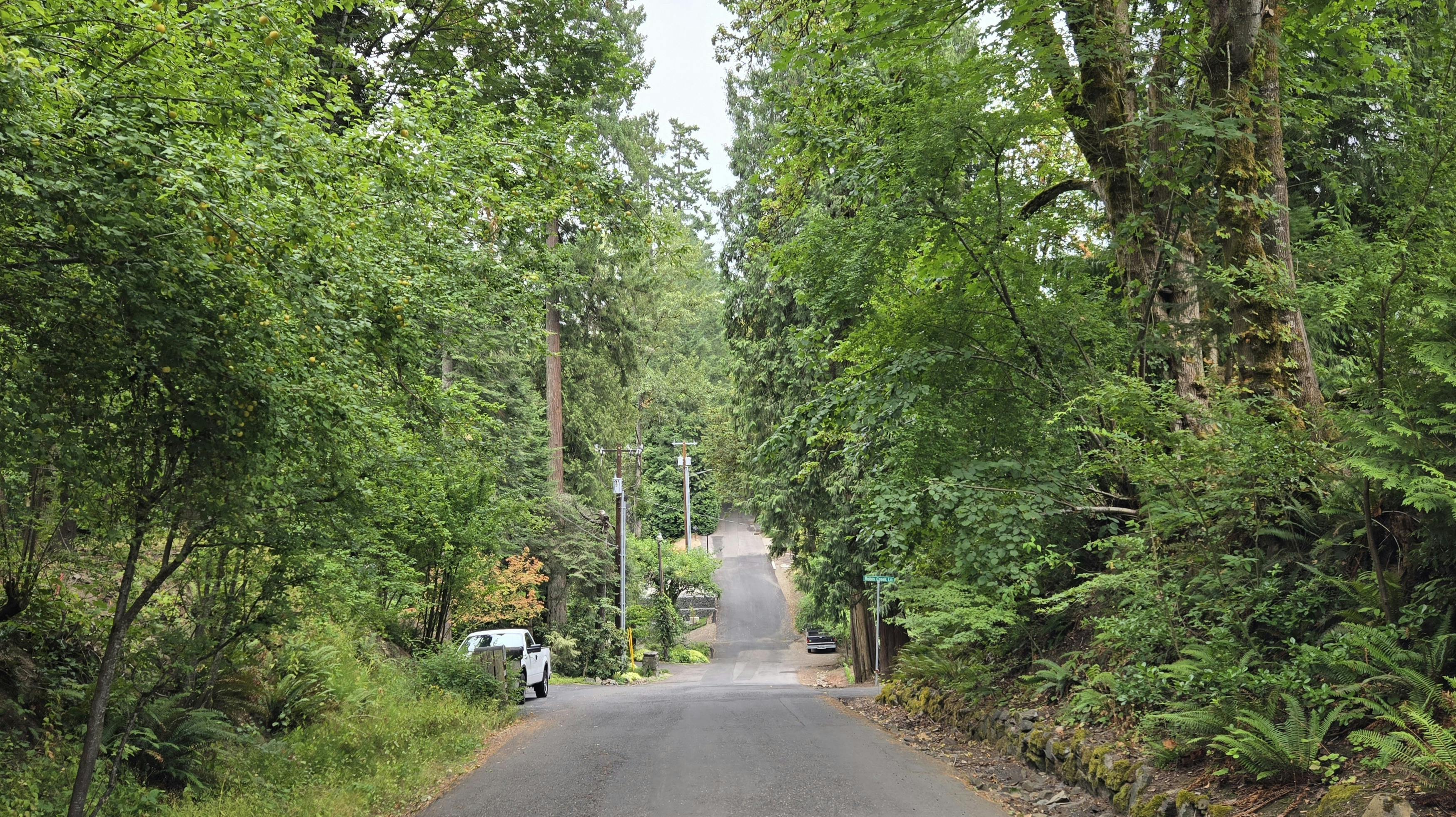FAQs
- Street-side visual assessments (conducted entirely from the public right-of-way with no access to private property);
- Photographic documentation of building exteriors; and
- Development of a brief historic context statement to provide background on the neighborhood’s architectural and historical significance.
What is the City Doing?
In Fall 2024, the West Linn Historic Review Board with the support of the City Council set a goal to identify potential historic resources within the Robinwood neighborhood. This effort is part of a larger initiative to better understand and document the area’s historical and architectural significance. The evaluation report will serve as an informational tool for the area.
The project includes a drive-by survey of approximately 560 residential and commercial properties in the Robinwood neighborhood built before 1975 to evaluate historic significance. The City has contracted with Kautz Environmental Consultants to carry out the following tasks:
The project will result in three key deliverables. First, a Baseline Survey Report will provide a preliminary identification of potential historic resources within the Robinwood neighborhood. Second, the project will include Recommendations for Further Evaluation, offering a prioritized list of properties that may merit more detailed study through a future, more detailed historic inventory. Finally, a Historic Context Overview will summarize the area’s development patterns, architectural characteristics, and historical significance to inform future preservation and planning efforts.
What does it mean for my property in this process?
The purpose of this evaluation is to understand the historical context of the Robinwood neighborhood. Being included in this survey does not impose any rules or restrictions on your property. Additionally, property owners may find the information interesting and useful, especially those who may choose to pursue landmark designation in the future.
Are there any homes in West Linn with a historic designation?
There are 25 individually designated local landmarks located throughout the City. The landmarks are predominantly residential and range from late 19th century Queen Anne homes to Craftsman bungalows and Period Revival style properties. Additionally, there are 38 homes that are contributing resources to the Willamette National Historic District.
How does the City decide if a building is “historic?”
Properties are evaluated for historic significance based on the National Register Criteria for Evaluation, which was developed by the National Park Service to establish consistent, nationwide standards for historic preservation efforts.
There are four basic criteria for determining whether or not a building is historic: architectural significance, integrity, setting and history. Architectural significance deals with style, rarity of type, craftsmanship, materials, and the architect, designer or builder. Integrity looks at how much original fabric remains and whether alterations are compatible. Setting refers to how well the building fits into the neighborhood and streetscape and whether there are early plantings on the site. History deals with the significance of the owners or occupants, whether the building represents any significant trends or if the building is associated with an important event.
As part of the evaluation, the consultant will assess the architectural character of each building, including any visible exterior alterations, to make a preliminary determination about whether the property may merit more detailed evaluation in the future.
Can I opt out of a historic designation?
This evaluation does not designate any property as a historic landmark, nor does it impose any regulations or restrictions. For property owners interested in pursuing a historic landmark designation in the future, the evaluation can serve as a helpful resource. However, a property cannot be designated as a historic landmark without the owner pursuing landmark status for the property.
Are there inventories of other neighborhoods in West Linn?
The City has completed historic surveys of the Bolton, Sunset, and Willamette neighborhoods.
In 2006, the City prepared a Historic Context Statement for the Willamette and Holly Grove Neighborhood. In 2009, the City completed a Reconnaissance-level Survey of Historic Resources for the Buck Street Neighborhood. In 2010, the City completed Reconnaissance-level surveys for Bolton & Sunset Neighborhoods. In 2007, the City listed the Willamette Historic District on the National Register of Historic Places. In 2012, the City conducted a Selective Reconnaissance-level Survey of the Willamette Neighborhood of 250 selected properties within the Willamette Neighborhood were built in 1965 or earlier.
What do we know about the Robinwood Neighborhood?
Significant residential development in Robinwood began in the late 1940s, extending from the edge of the Marylhurst College campus to the West Linn city limits at Jolie Point Road. In 1967, the City of West Linn formally annexed the Robinwood area, expanding its borders to include this growing community.
The Historic Context Statement researched by the consultant will provide more detail about the history of Robinwood. If you have any photos or old newspaper articles that you would like to be included in the report, please share with project team by the end of August 2025.
Where can I get additional information about the project?
If you have questions at any time during this project, please contact, Lynn Schroder, in the Community Development Department at 503-742-6061 or lschroder@westlinnoregon.gov.

